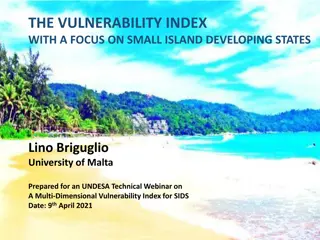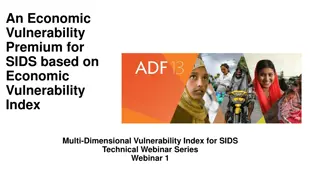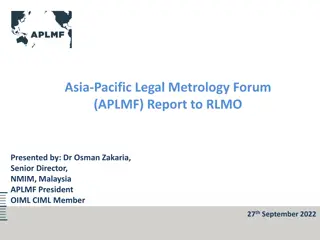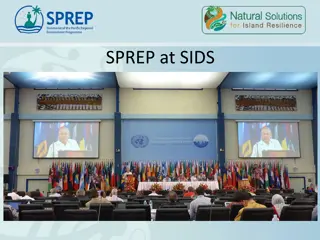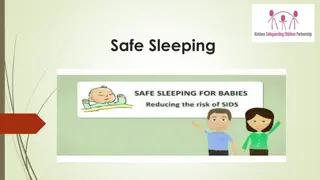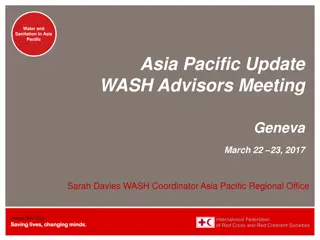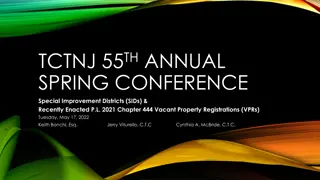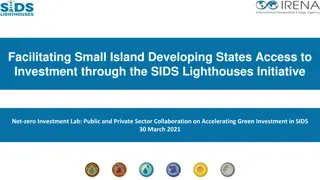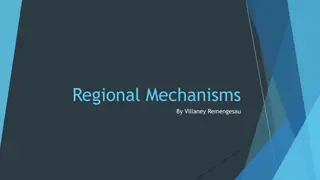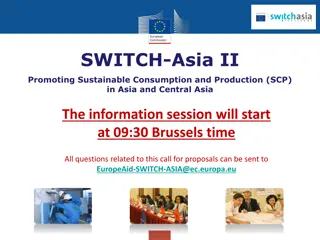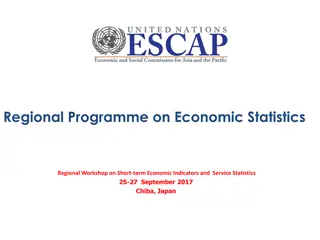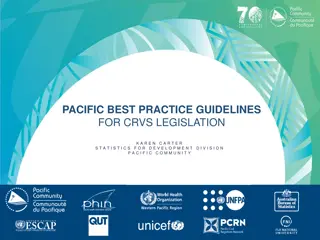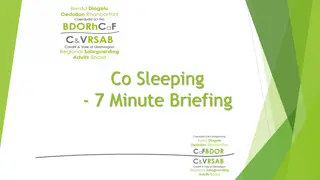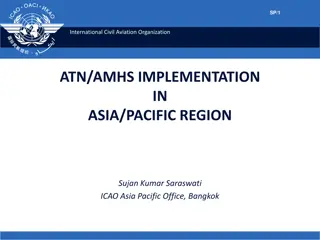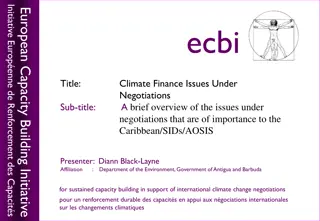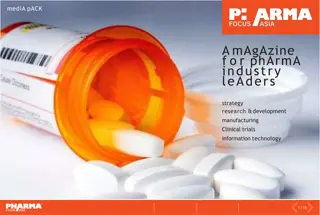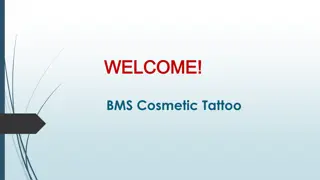
Impact of Nanotechnology in the Pacific Region
Explore the perspectives and initiatives surrounding the safety and implications of nanotechnology in the Pacific region, as presented by Ms. Imogen Ingram from Island Sustainability Alliance CIS Inc. Learn about the work of IPEN Nano Working Group and the importance of SAICM forum in discussing nanomaterials. Discover the expectations versus reality of nanotechnology applications and the reasons for caution in handling manufactured nanomaterials.
Download Presentation

Please find below an Image/Link to download the presentation.
The content on the website is provided AS IS for your information and personal use only. It may not be sold, licensed, or shared on other websites without obtaining consent from the author. If you encounter any issues during the download, it is possible that the publisher has removed the file from their server.
You are allowed to download the files provided on this website for personal or commercial use, subject to the condition that they are used lawfully. All files are the property of their respective owners.
The content on the website is provided AS IS for your information and personal use only. It may not be sold, licensed, or shared on other websites without obtaining consent from the author.
E N D
Presentation Transcript
Pacific Perspectives under SAICM on Safety of Manufactured Nanomaterials Presented by Ms Imogen INGRAM from Island Sustainability Alliance CIS Inc. ( ISACI ) PO Box 492 Rarotonga COOK ISLANDS (Pacific Sub-Region) Email: imogenpuaingram@gmail.com
IPEN Nano Working Group IPEN (International POPs Elimination Network) is made up of over 800 international NGOs from 5 continents. 50 of these, including several in the Asia-Pacific Region, belong to IPEN s nano working group, set up in 2009. In 2013 the declaration formulated about workeres health was formulated at a multi-stakeholder meeting. It is available here: http://bit.ly/169xHWn). It called for a precautionary approach by all international organizations (including ILO, FAO, WHO ) and further called for industry to keep workers inform their workers with regard to workplace use of nanomaterials.
IPEN Information Booklet IPEN has prepared an information booklet entitled The Social and Environmental Implications of Nanotechnology Development in Asia-Pacific , covering each of the five sub-regions. It is available for downloading from the sites below: http://ipen.org/pdfs/nano_booklet_sept_5.pdf http://www.ipen.org/pdfs/Nanotechnology_en.pdf)
IMPORTANCE OF SAICM FORUM SAICM has provided the only global forum for discussion of nanomaterials and related issues among Small Island Developing States, developing countries and countries with economies in transition. Notable achievements have been the reports on nanomaterials presented to SAICM OEWG1 and ICCM3 and the inclusion of nano specific activities in the Global Plan of Action. Thanks to UNITAR for enabling partici- pation of Civil Society, and to NANOTEC for our excellent meeting arrangements
Great Expectations for Use of Nanotechnology And Reality Check Initially, nanotechnology offered technical solutions to environmental issues. Suggested applications included remediation of contaminated soils e.g. zero-valent iron); cheap potable water treatment; effective wastewater treatments; energy production and storage; delivery of medical drugs in cancer treatment. In reality the applications have been mostly product-oriented e.g. odorless and stain resistant textiles, cosmetics, better performing sport equipment etc The rationale for governments to use nano solutions is avoidance of future budgetary costs caused by poor health and ecosystem damage.
Reasons for Caution With Regard to Manufactured nanomaterials HazMat suits and hermetically-sealed laboratories required when working with nanomaterials because of the danger of ingesting nanoparticles Toxicology of manufactured nanoparticles to human health and the environment varies greatly when comparing the bulk form with the manufactured nanomaterial e.g. titanium dioxide Some carbon nanotubes act like asbestos Some nanoparticles have shown severe toxicity to fish species and freshwater ecosystems Exposure to silver nanoparticles in young males affects sperm quality Some nanoparticles crossed the blood-brain barrier, and others transfer through the placenta to the foetus
WHAT WE DO & DONT KNOW ABOUT SAFETY OF NANOMATERIALS Studies have shown that there are unwanted effects, but not enough is known about how to evaluate them or how to anticipate and counteract them Environmentally-sound disposal of products containing manufactured nanomaterials has not been adequately addressed Given this uncertainty, authories owe their citizens a duty of care and should foster full life-cycle management of products containing manufactured nanomaterials
DECLARATION ON NANOMATERIALS In 2013, IPEN CSOs participated at a seminar held in Latin America about the impact on workers of nano development. It was attended by social scientists, chemists and physicists, trade unionists and a lawyer. A joint declaration was formulated, which has received wide support. It called for a precautionary approach by all international organizations (including ILO, FAO, WHO ) with regard to the impact of nano on workers; further, it called on industry globally to inform their workers when using nanomaterials. The declaration is available here: http://bit.ly/169xHWn) Similar declarations were made in other regions, including Africa.
RELEVANCE OF THE REGIONAL RESOLUTIONS TO PACIFIC SMALL ISLAND STATES The main focus of these resolutions was: To uphold the principle that if there is no data, then there is no market No nano wastes for countries which cannot deal with them appropriately Implementation of precautionary regulatory framework Enabling countries & consumers to have the Right to know about products containing manufactured nanomaterials. As importer countries, Pacific SIDS could use the Global Harmonized System for Customs Tariffs to identify such products [pictograms like the Nano Mark would be effective, after certification]
PACIFIC SIDS NANO ISSUES Page 1 Yesterday s presentation on wastewater indicated that there is insufficient data regarding the impact on human health & the environment. Pacific SIDS do not have the capacity to deal with treatment of discarded products containing nanomaterials in an environmentally sound manner., so more research is needed. Proper treatment of nanoparticles in wastewater are of special importance to Pacific SIDS. First, tourism is a significant revenue earner for Pacific SIDS, but a lot of wastewater is generated by this sector. Wastewater treatment is focused mainly on bacterial pollution but remediation of chemical pollution (including nanoparticles) is needed e.g. Agricultural pesticides; nanosilver from washing textiles
PACIFIC SIDS NANO ISSUES Page 2 There is now evidence that nanoparticles are being detected in fish, which we rely on for our daily protein. We would like biomonitoring of fish in order to determine if there is a threat to food security and also to ensure measures are taken to reduce exposure from traditional food sources. Many Pacific SIDS give licences to distant fishing nations for commerical fishing in their EEZ. The majority of the tuna fish on the Tokyo fish market comes from the Pacific. So international consumers should also be assured that the fish on their plate is of good quality. Marine plastic debris is also a concern to Pacific SIDS because the breaking of waves on barrier reefs can create nanoparticles in the that contain residual POPs or heavy metals from the colours in the plastics. Current collection activities now taking place in the Indian Ocean need to be expanded to the Pacific Ocean.
PACIFIC SIDS NANO ISSUES Page 3 Canadian research [see Canadian Chemicals News, Nov/Dec 2014] indicates that wastewater ultrafiltration does not pick up all nanoparticles; and then there us the problem of what to do with them after they have been captured. Common practice is to spray dried sewage sludge on agriculture fields, which results in return of the pollutant to the environment. The implication is that nanoparticles in freshwater system will drain into the ocean,where they are circulated and become ingested by the fish that we depend on for daily protein. Reduction of marine pollution is one of the features of SDG#14, a stand-alone goal for the protection and promotion of oceans that is of high importance to Pacific SIDS. It will be negotiated as part of the 17 Sustainable Development Goals later this s month in New York the Summit will be held on Post-2015 Development Agenda.
GUIDELINES TO CREATE PRECAUTIONARY FRAMEWORK FOR NANOMATERIALS More is required in terms of political will and financial commitments to implement the collaborative actions in the Global Plan of Action that were recommended at ICCM3. Discarded products containing nanomaterials need to be treated as hazardous wastes using BAT-BEP, in parallel with efforts to draft the legal and technical guidelines to establish a precautionary framework for safer use. THANK YOU FOR LISTENING !



